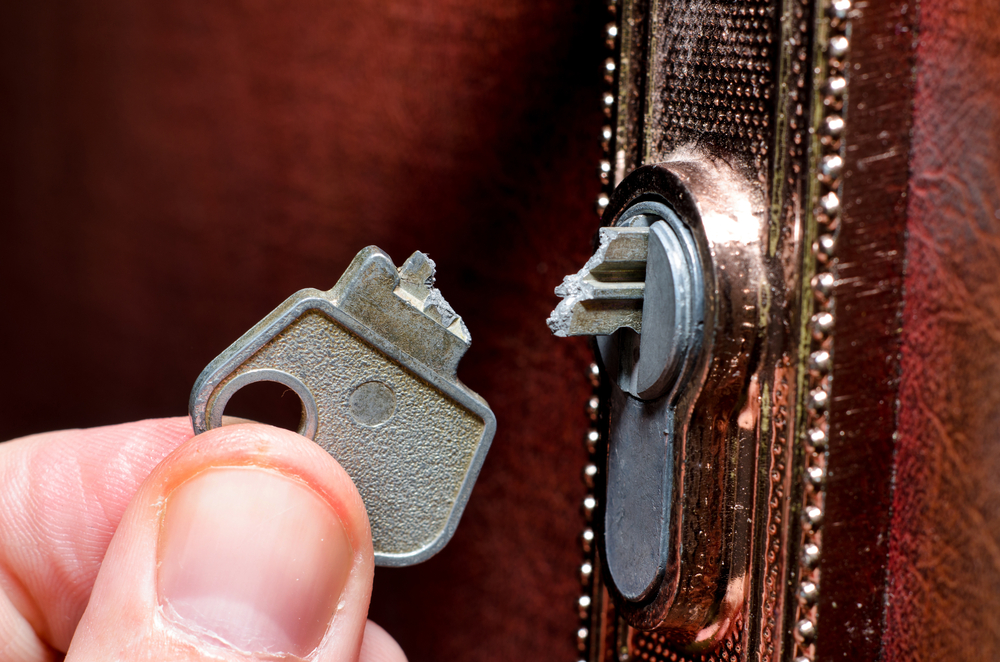There are some standard methods that you can use to Broken Key Extraction from your lock. These include pliers, tweezers and a paper clip.
Using super glue might also work. Apply some of it on a match or a thin piece of wire and insert it in the lock.
Pliers
Depending on the location of where the key fragment is broken off in the lock, you may be able to grip and pull it with a pair of pliers. This works best when the break is visible and not embedded deep inside the lock. A good pair of locking pliers is ideal for this, but needle nose pliers can also work. Just be sure to use a pair that opens wide enough to fit over the broken segment.
You can purchase a set of professional extractor tools at most hardware stores. These sets come with a variety of different tools that are the right size for each type of lock.
If you don’t have professional extractor tools, you might be able to use a mini hacksaw blade or a tiny drill bit instead. But make sure that you don’t yank on a snagged key, as this could result in further breaking of the fragment and possibly damaging the lock.
Paperclip
Paperclips are a useful tool for many reasons, including the removal of a broken key. This is especially true if the broken key section of the lock is not too deep inside the lock. To use the paperclip, first bend it into a straight position and insert it above the broken key section. Then, push it downwards and twist it to grip the broken key.
If this method doesn’t work, try using a thinner paperclip or a spiral key extractor. These tools are designed to fit in small spaces and will provide more leverage on the key. If you have a spray bottle of lubricant, apply it to the keyhole and the broken key section to help it slide out.
Another helpful tool for removing a broken key is a gum eraser. These are used primarily by artists, architects, and students and have a chewing gum-like texture. To use the gum eraser, knead it until it’s soft and then gently mold it around the broken section of the key. Then, slowly pull it out.
Hacksaw Blade
If pliers and the pliers/glue method fail to free your broken key, try using a thin blade from a hacksaw. Apply some super glue to the end of a match or another piece of thin metal wire, such as a bicycle spoke. Cover the other end of the wire or match with duct tape to keep the glue from drying. Slip the duct-taped blade into the lock and try to grip one of the edges of your key.
The teeth on a hacksaw blade are categorized by their TPI, or “teeth per inch.” A blade with more teeth is better for heavy cutting tasks like thick iron piping. A blade with fewer teeth is ideal for cutting aluminum sheets or other soft but hard metals.
Line up the blade’s teeth with your key’s groove, and twist or lever the hacksaw blade into place. Eventually, the blade’s teeth will grab onto your key and pull it out.
Glue Stick
If the broken section of your key is not pushed all the way into the lock, it may be easy enough to grab with pliers or a paperclip. You might also try using tweezers, although they can be tricky as they’re very thin and could cause the broken key to break further.
If you don’t have any of the above tools, a glue stick may work as a good alternative. Glue sticks are solid adhesives that come in twist or push-up tubes for clean application. They usually contain a solvent-free glue that’s suitable for paper, photos and cardboard.
Use a lighter to melt one end of the glue stick and then press it onto the exposed section of your broken key. Wait for the glue to harden before trying to remove it. This hack is a bit trickier than the others because if the glue sticks to the internal lock mechanism, it might damage it.









